- Преподавателю
- Иностранные языки
- Материал к уроку английского языка по теме Лондон
Материал к уроку английского языка по теме Лондон
| Раздел | Иностранные языки |
| Класс | 8 класс |
| Тип | Конспекты |
| Автор | Гайнутдинова Л.Н. |
| Дата | 12.12.2015 |
| Формат | doc |
| Изображения | Есть |
London
ГайнутдиноваЛ.Н.
Конспект урока
Тема раздела: Великобритания.
Тема урока: Лондон
Цели урока:
Обучающая:
-
Практика в речевой деятельности: чтении, говорении, аудировании.
-
Активизация лексики по теме «Лондон».
Развивающая:
-
Развитие умения понимать и передавать основную мысль прочитанного и услышанного.
-
Развитие инициативы в осуществлении иноязычной речевой деятельности.
-
Развитие познавательного интереса к английскому языку и культуре страны изучаемого языка.
Воспитывающая:
-
Воспитание уважения к культуре английского народа
План урока:
-
Организационный момент.
-
Фонетическая разминка.
-
Актуализация знаний.
-
Объяснение материала.
-
Закрепление.
-
Контроль (выполнение теста).
-
Подведение итогов.
-
Объяснение домашнего задания.
Ход урока:
-
Организационный момент.
Т: Good morning, my friends! Today we will speak about London. Your homework for today's lesson was to read about sights in London. And I hope you've got to know lots of them. You should be very attentive today and at the end of the lesson you will have to fill in the blanks in the "London. Sightseeing." quiz.
-
Фонетическая разминка.
Read names of some sights in London:1
-
Актуализация знаний.
T: When people think of a foreign country they picture in their minds its capital, of course. Let's remember the capitals of the countries of the UK.2
T: What do you usually think of when you think of some city? What places of interest are there in each capital of the country? Complete the Word Web.3
-
Объяснение нового материала.
T: Today we will speak about London.4 Samuel Johnson said: "When a man is tired of London? He is tired of life; for there is in London all that life can afford". Today, more than 200 years later, Johnson's words still ring true. There are few places that offer such a variety of sights, entertainments, educational and business opportunities, world famous museums and theaters. Now look at the map of the central part of London.5
T: There are a lot of places of interest in London. Would you like to see famous London sights? Our experts will tell us what is worth seeing in the capital of Britain. Every of us for today's lesson read about one of the places of interest in London. When you listen fill in the table with the main information about the sights in pairs.6
Ps: present the famous sights of London. T. shows slides.
GENERAL INFORMATION
London lies on the river Thames The population of the city is about 9 million people. It is an ancient city, for it is more than 2000 years old. London consists of three main parts the City, The West End and the East End. The City is the most important commercial and financial center of the country; there are banks and offices of companies from all over the world there.7 The West End is a district where most of theaters, bars, restaurants and hotels are situated. The popular place is Piccadilly Circus.8 It is a square in the central part of London, where we can see people of many nationalities. Piccadilly Circus is the meeting point of six streets. London's famous restaurants and best-known theatres and cinemas are on Piccadilly Circus. Covent Garden is a tourist shopping center with cafes and restaurants. In the East End there are most of the factories and docks.
PARKS
There are a lot of parks and gardens in London.9 In Regent Park there is London Zoo. It's one of the biggest zoos in the world. Near the Buckingham Palace there are two parks: Green Park and St. James Park, where we can see pelicans and ducks. Hyde Park covers an area of 360 acres. On the north of Hyde Park there is a very famous place called 'Speaker's Corner' where, only on Sundays, any person can talk on any subject. One of the most famous speakers there is Lord Soper who is a politician. Here you will see what we call "hecklers". They are people who try to upset the person speaking. It is well worth a visit on Sunday from 10.00 until they finish.
LONDON TFAFFIC
First of all, traffic in London differs from that of the Continent. In England we keep to the left side of the road and not to the right.10 You can see many buses, cars and taxis in the streets. There are two main kinds of buses in London: the red double-decker11 and the red single-decker. Some double-deckers have automatic doors and you may pay the driver when you go in. In single-deckers you buy your ticket from a machine in the bus. But most London buses have a conductor who will come round and collect fares. Double-deckers have seats for 65 people. Only 5 people are allowed to stand when the seats are full.
BUCKINGHAM PALACE
Buckingham Palace12 is the official residence of Her Majesty the Queen and her family. It isn't open to the public. The first monarch who took residence there was Queen Victoria. When Her Majesty is in residence the Royal Standard flies over the east front of Buckingham Palace. It has 600 hundred rooms, a swimming pool, a cinema, a ballroom, a nuclear cellar and a garden, which is like a private park. In summer the Queen gives three garden parties for about 9,000 guests. The ceremony of the Changing of the Guard at Buckingham Palace is a great tourist attraction. It takes place daily in the forecourt at 11.30 a.m. and lasts half an hour. To the sound of music, the guardsmen in their traditional bearskins arrive and pass the palace keys to another group.
ST. PAUL'S CATHEDRAL
The City's greatest monument, St. Paul's Cathedral13 was built by Sir Christopher Wren between 1675 and 1710 to replace the old Cathedral that was largely destroyed in the Great Fire of 1666. The Cathedral is second in size only to St. Peter's in Rome. Between the two west towers rises the famous dome. It is 365 feet high and beneath it is the celebrated "Whispering Gallery". Unfortunately Christopher Wren died before its completion. He is buried there. Among the many memorials to famous men within the Cathedral are the tombs of Wellington, victor of Waterloo, and Nelson, hero of Trafalgar.
TRAFALGAR SQUARE
Trafalgar square is a very famous square where on New Year's Eve people gather to celebrate. At midnight people jump into the fountains fully clothed and enjoy themselves.14 In the middle of the square there is a very famous statue "Nelson's Column" which is over 170 feet high.15 The statue on the top is in memory of Lord Horatio Nelson who won the most famous sea battle at Trafalgar. This column is cleaned once every seven years. It is a very difficult job as they have to climb to the top and clean all the mess the pigeons have made on the statue. Trafalgar Square has become famous as a rallying point for all kinds of demonstrations, marches and political meetings.
NATIONAL GALLERY
The whole of the north side of Trafalgar Square is dominated by the National Gallery.16 It houses one of the finest art collections in the world. It includes paintings from British, Italian, Spanish, French, Dutch, Flemish and other famous schools. It has a priceless collection of paintings by the famous artists Van Gogh, Reubens, Constable and any other painter you wish to name.
THE TOWER OF LONDON
It is a very old building, - nine hundred years old!17 In the early days of England the English kings lived in the Tower. Then it was a prison where many people died. Black ravens had much food near the walls of the Tower in those days. Now the Tower of London is a museum housing the National Collection of Armour and Royal Regalias, and many tourists from other countries come to see it. They see the dark stone halls with small windows and thick doors. Something that should not be missed is the Crown Jewels, a priceless collection of every jewel known. The Tower is still guarded by the Yeomen Warders, the famous Beefeaters, who wear a traditional sixteen-century uniform.
TOWER BRIDGE
It was opened in 1894.18 It takes its name from the Tower of London. The hydraulic mechanism can raise and lower the bridge in about one and a half minutes. The covered walkway between the two towers is open to the public and offers a spectacular view of London.
WESTMINSTER ABBEY
It is a symbol of English tradition at its best.19 The coronations of nearly all English kings and queens since William the Conqueror have taken place here. Many of them are buried within the Abbey. Beneath the roof of this Gothic building there are also the graves and memorial slabs of statesmen, philosophers, men of letters and other distinguished people. Here you can see memorials to Isaac Newton, Charles Darwin, Geoffrey Chaucer, Alfred Tennyson, Charles Dickens and Thomas Hardy.
THE HOUSES OF PARLIAMENT AND BIG BEN
The Houses of Parliament is a very large building which stands near the Thames.20 Once a royal palace, the Houses of Parliament are now the seat of the Government. In 1834 it was destroyed by fire. The new building was built between 1840-1852. It contains 500 apartments. Among them are the Central Hall, Clock Tower (St. Stephen's Tower), the House of Lords, the House of Commons. The Houses of Parliament stretch for nearly 1000 feet along the north bank of the Thames. When the House is in session a Union Jack flies from the tower by day, and a light burns in the Clock Tower by night.21 Clock Tower is 320 feet high and is famous for its immense hour bell. The English people built the tower and the clock in 1858. The clock has four faces and five big bells. The biggest bell is known as Big Ben. The bell weighs 13 tons. Originally, the man in charge of the building was Sir Benjamin Hall. He was very tall and the workers and his friends called him Big Ben. So they called the bell Big Ben too. Sometimes people call the clock and the Clock Tower Big Ben. The people of London who live near the Houses of Parliament can hear the sounds of the bell every hour. On New Year's night people come to the Clock Tower to see in the New Year.
-
Закрепление нового материала.
T: Now, my friends, let's summarize what we can see in London.
T: Name these sights and say a few words about them.
-
… Park (Hyde)
-
… Square (Trafalgar)
-
… Gallery (National)
-
… of London (The Tower)
-
… Cathedral (St. Paul's)
-
… Bridge (Tower)
-
… Abbey (Westminster)
-
… Palace (Buckingham)
-
The River…(Thames)
-
The Houses of …(Parliament)22
6. Контроль.
T: Well, my friends, and now we'll see if you know London well. Do the test in your computer (or in the worksheets). Choose the correct answer.
And one more task for more attentive persons is to answer the questions.
Test I "London. Sightseeing".
-
You can see the column with a statue of Nelson in…
-
Piccadilly Circus
-
Hyde Park
-
Trafalgar Square
-
-
… is very democratic park.
-
Hyde Park
-
Regent's Park
-
St. James's Park
-
-
London Zoo is in …
-
Regent's Park
-
St. James's Park
-
Hyde Park
-
-
They change the Guard every day at…
-
9:30 a.m.
-
11:30 a.m.
-
12 o'clock
-
-
Piccadilly Circus is the meeting point of …
-
5 streets
-
7 streets
-
6 streets
-
-
Another famous sight outside the Tower of London is the …
-
Pelicans
-
Ravens
-
Ducks
-
-
The London home of the Queen is …
-
Buckingham Palace
-
Westminster Abbey
-
Covent Garden
-
-
The seat of the British Government is
-
The Houses of Parliament
-
Buckingham Palace
-
Piccadilly Circus23
-
Test II "London. Sightseeing".
-
What is Covent Garden? (A tourist shopping center).
-
What is a double-decker? (A bus).
-
What is Big Ben? (One of the most famous clocks in the world).
-
Who is the architect of the famous St. Paul's Cathedral? (Sir Christopher Wren).
-
Where can you see wax models? (Madam Tussaud's).
-
Where is the Queen's residence in London? (Buckingham Palace).
-
Which building has a famous "Whispering Gallery"? (St. Paul's Cathedral).
-
Which place has a monument to Admiral Nelson? (Trafalgar Square).
-
It was a fortress, a royal palace and later a prison. It is a museum now. (The Tower of London).
-
This round place is often called the center of London. There's a statue of Eros in the middle of it. (Piccadilly Circus).
-
Mps debate and argue here, and there's a clock tower with a famous bell in it. (The Houses of Parliament).
-
English kings and queens are usually married here. Many of them are also buried here, as well as many famous writers. (Westminster Abbey).
-
Подведение итогов.
T: Thanks a lot. Did you enjoy our excursion? What places of interest in London do you like best?
P1: I like the Tower of London and Tower Bridge.
P2: I like the Tower of London, Tower Bridge and the Houses of Parliament.
P3: I like the Houses of Parliament and Big Ben.
P4: I like Westminster Abbey.
P5: I like National Gallery.
P6: I like Buckingham Palace and Royal parks.
P7: I like St. Paul's Cathedral.
P8: I like Trafalgar Square
T: analyzes pupils' work and give the marks.
-
Объяснение домашнего задания.
T: Your home task is to write a letter to your new friend about your impressions of London. For extra work you should add information which hasn't been mentioned today.
You have worked very well. Thank you. Goodbye.
Информационные объекты к уроку
ИО №1
Kensington Garden
Madam Tussaud's
Westminster Abbey
St. Paul's Cathedral
Tower Bridge
Trafalgar Square
National Gallery
The Thames
Buckingham Palace
Piccadilly Circus
ИО №2
Questions to pupils
Their answers
What is the capital of the UK?
London
What is the capital of Great Britain?
London
What is the capital of England?
London
What is the capital of Wales?
Cardiff
What is the capital of Scotland?
Edinburgh
What is the capital of Northern Ireland?
Belfast
ИО №3
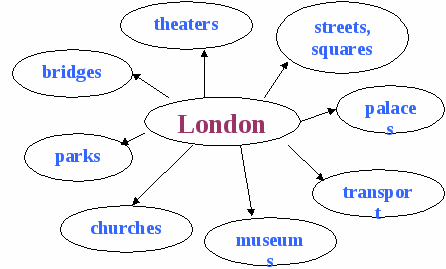
№4
"When a man is tired of London? He is tired of life; for there is in London all that life can afford".
Samuel Johnson (1709 - 1784)
№5 №7
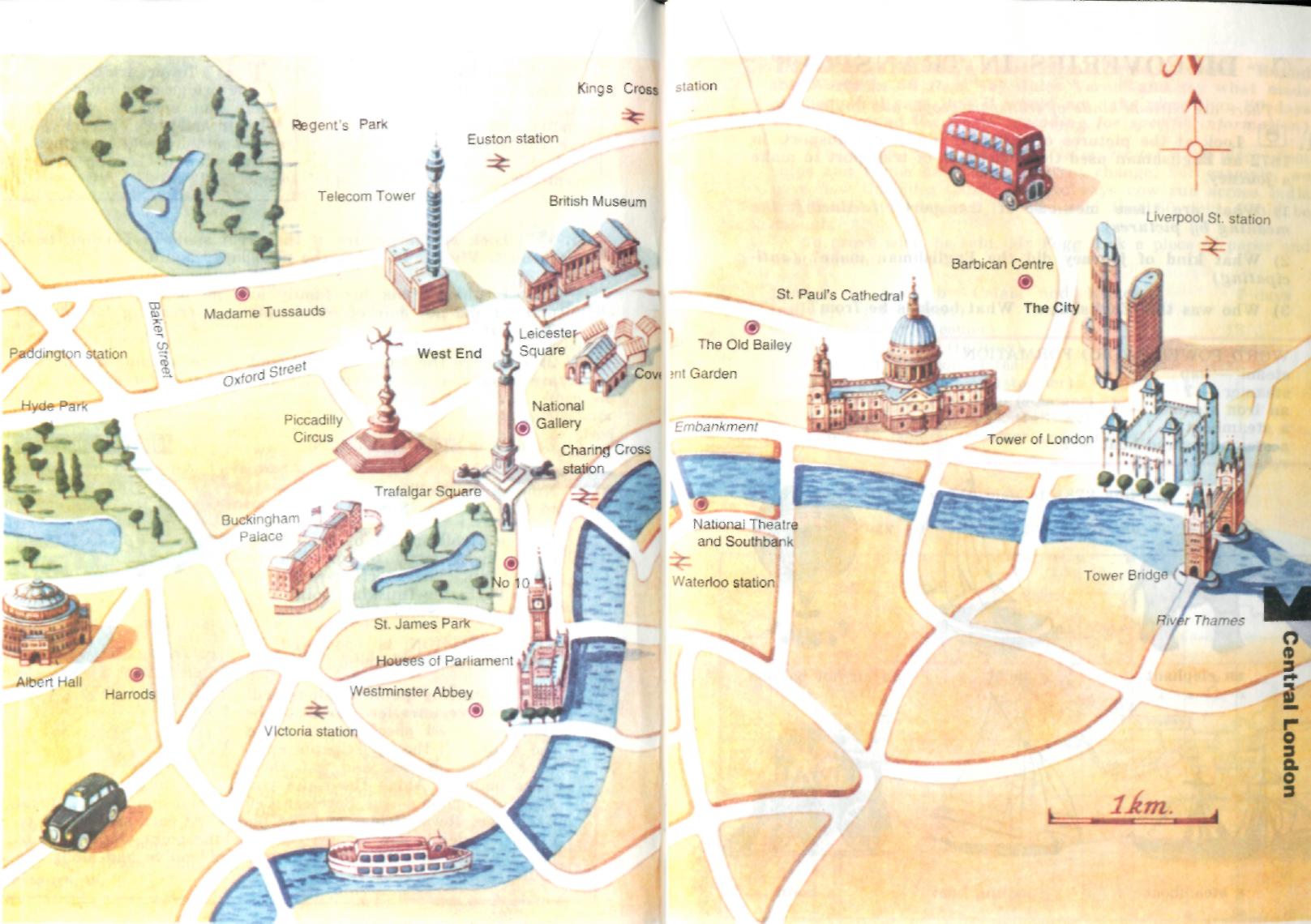
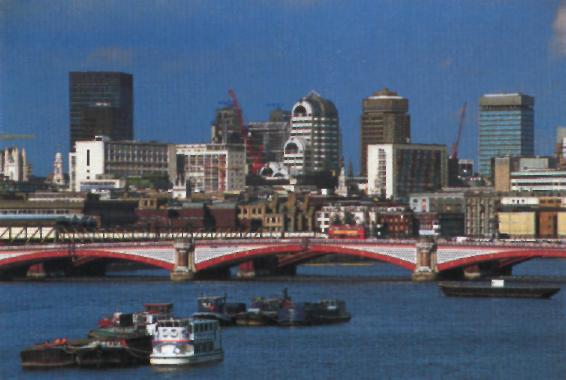
№8 №9
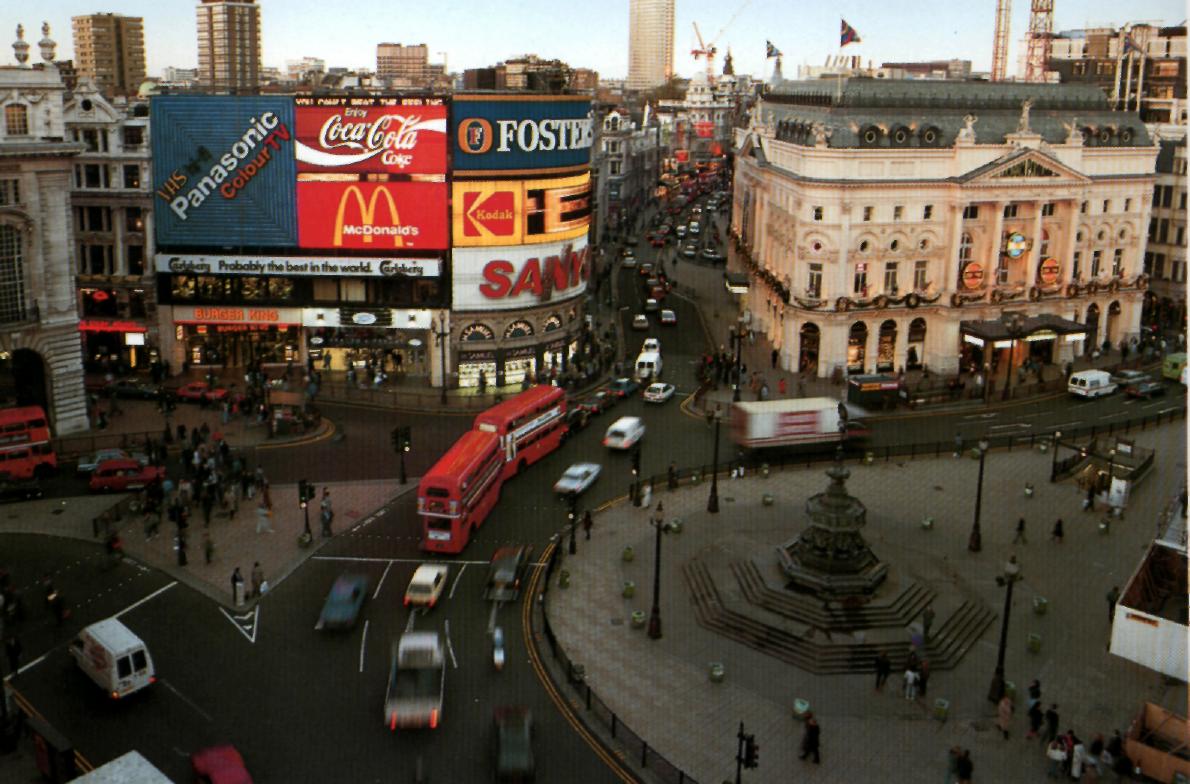
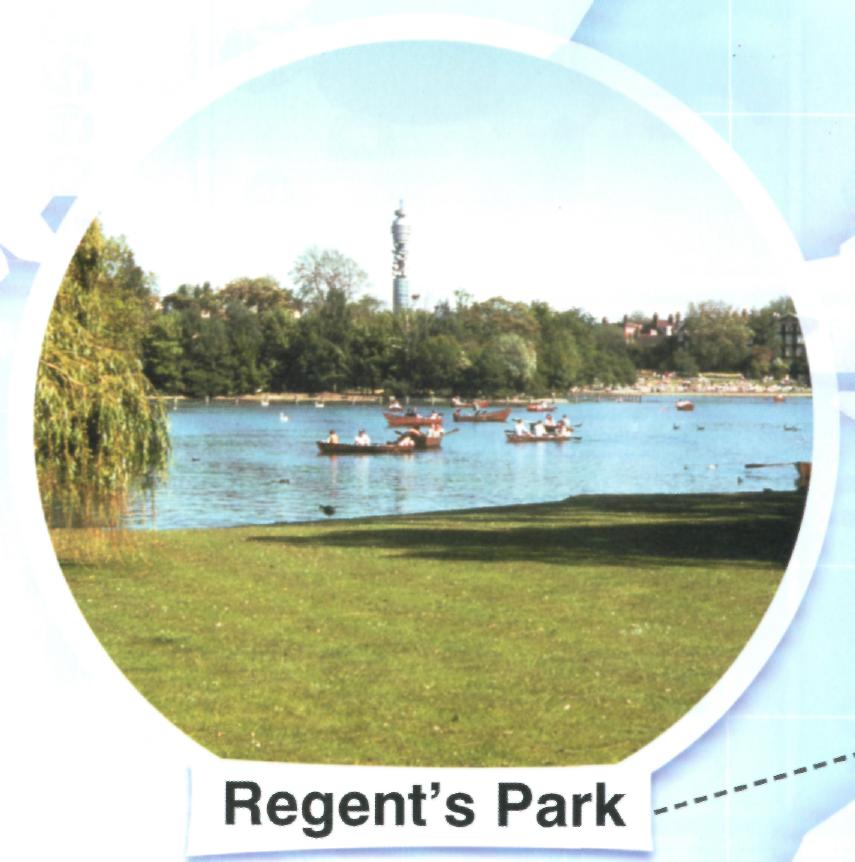
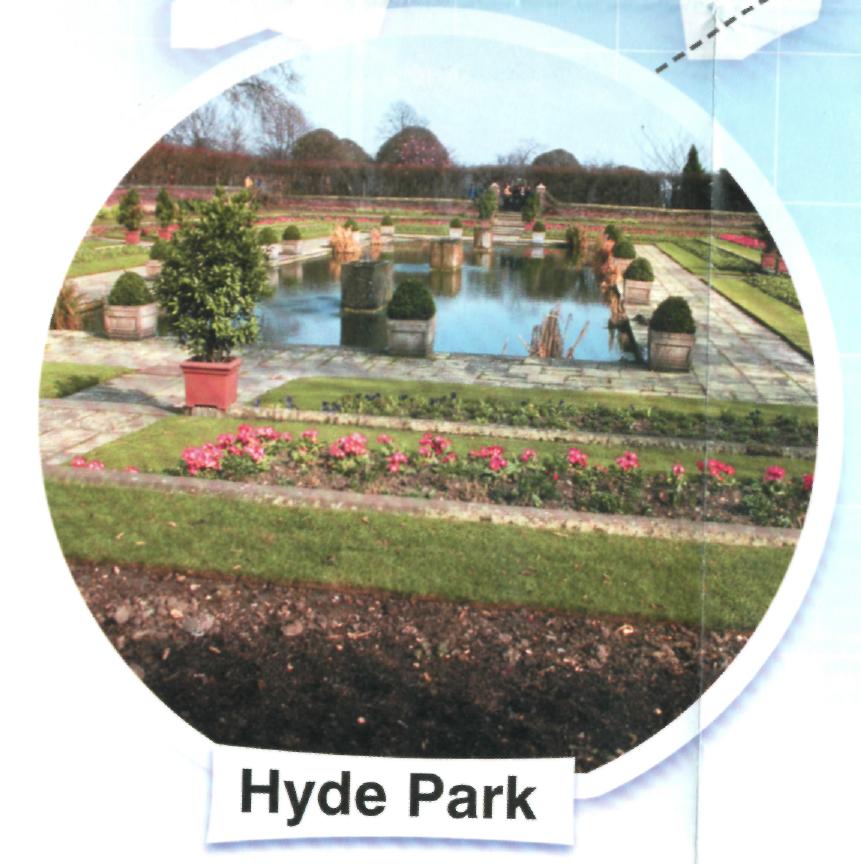
№10 №11

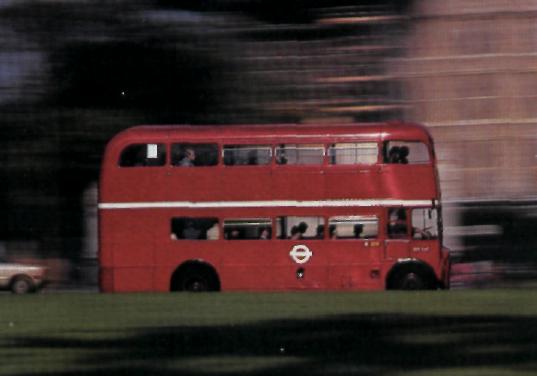
№12 №13

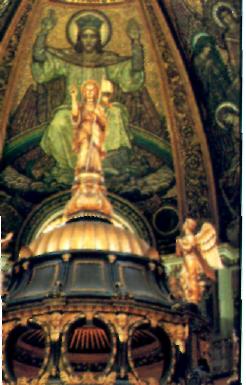
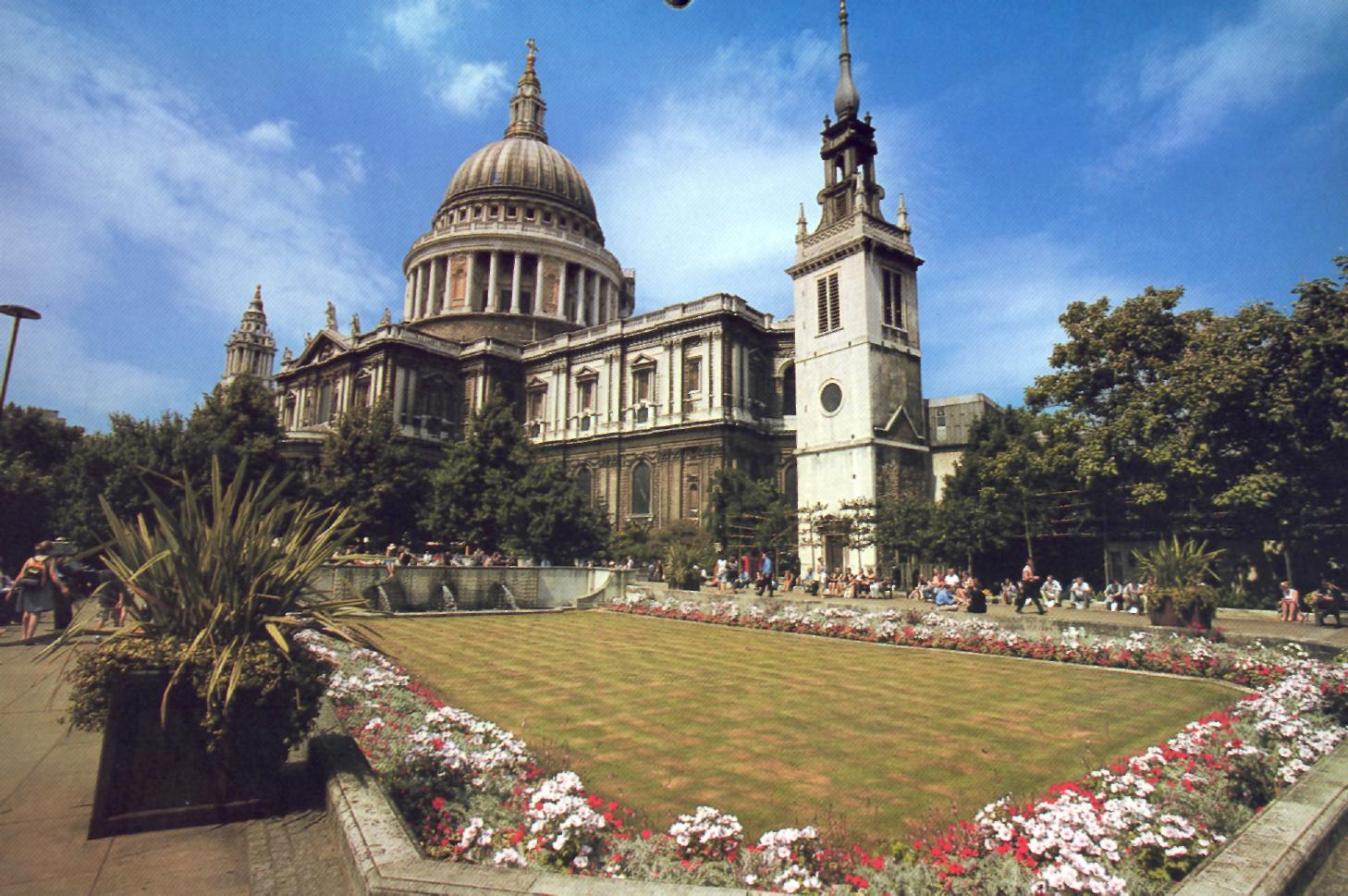
№14
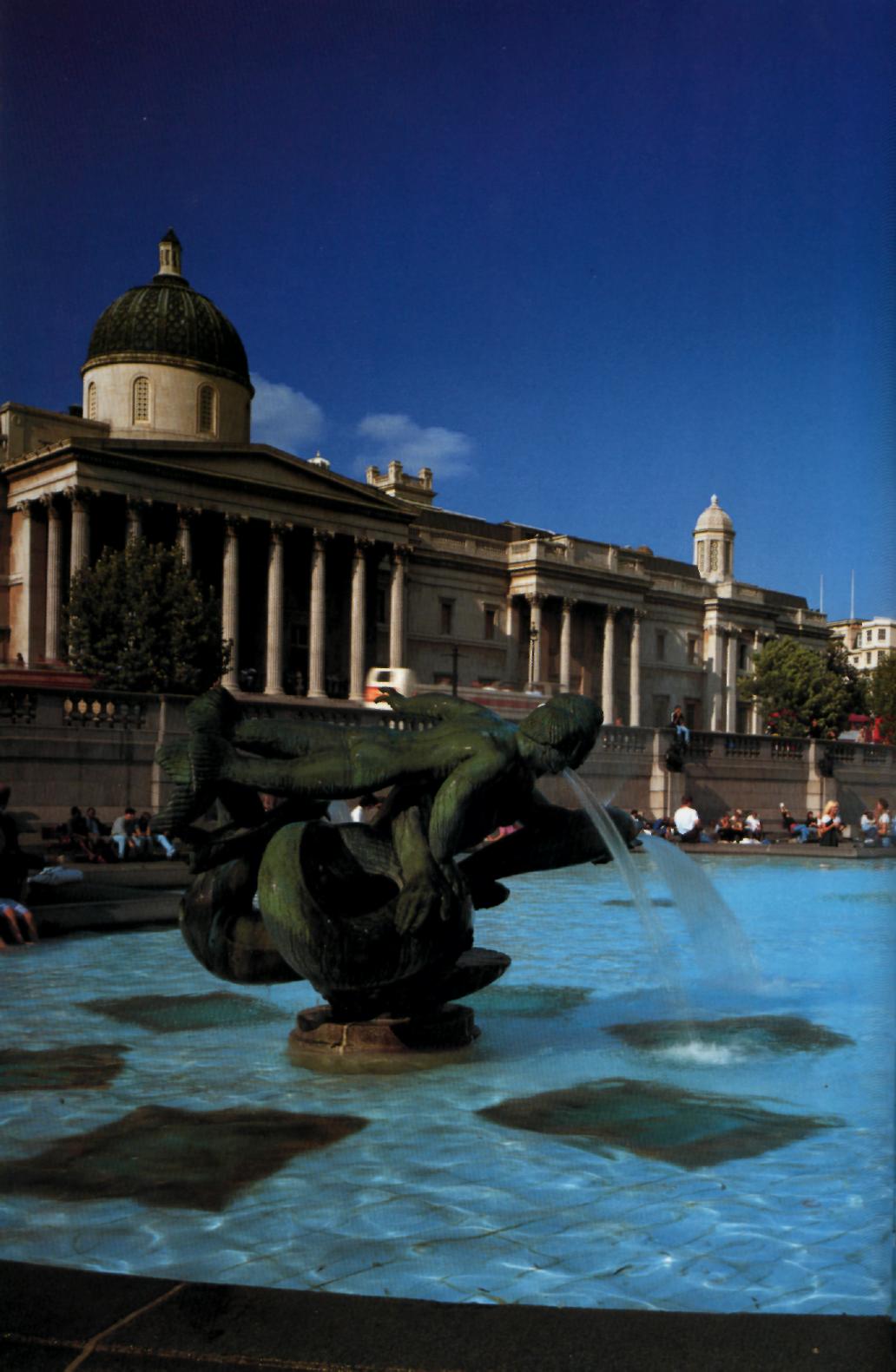
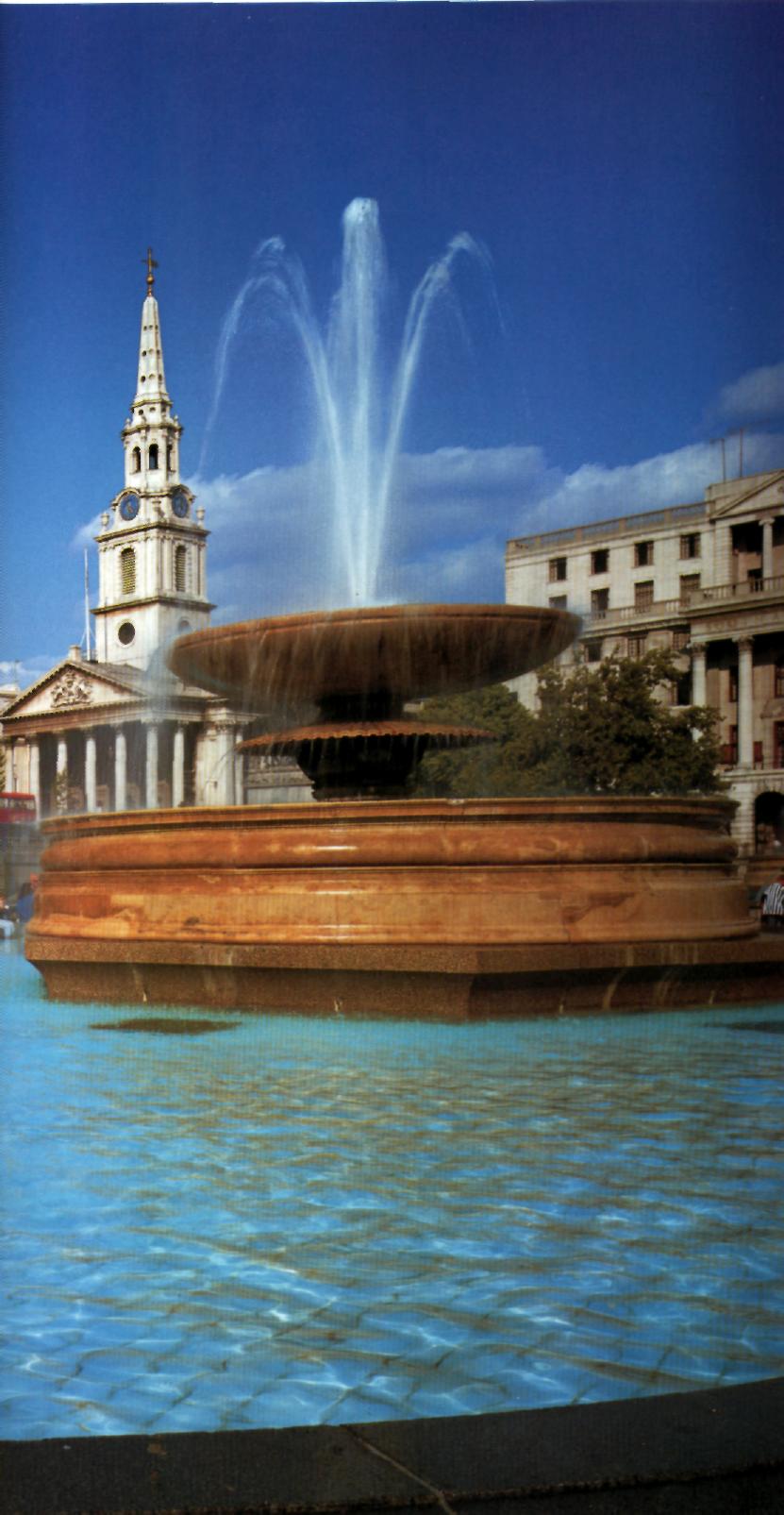
№15 №16 №17
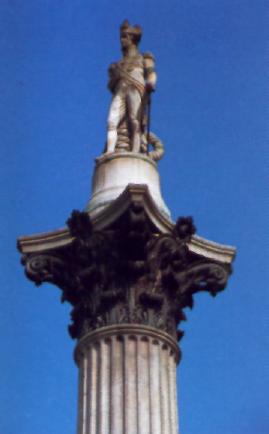
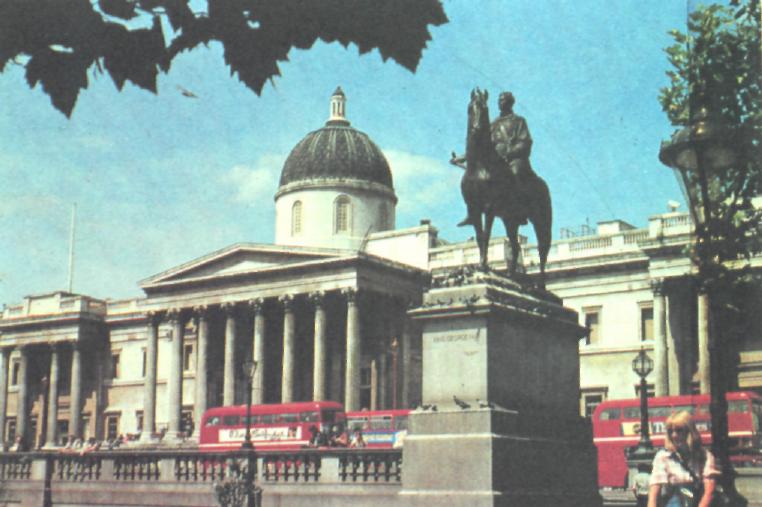
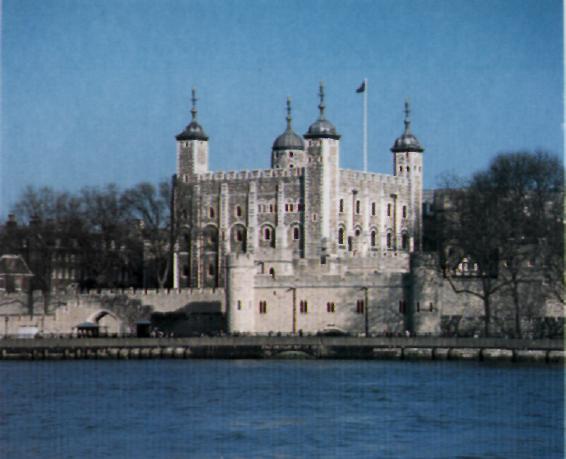
№18 №19
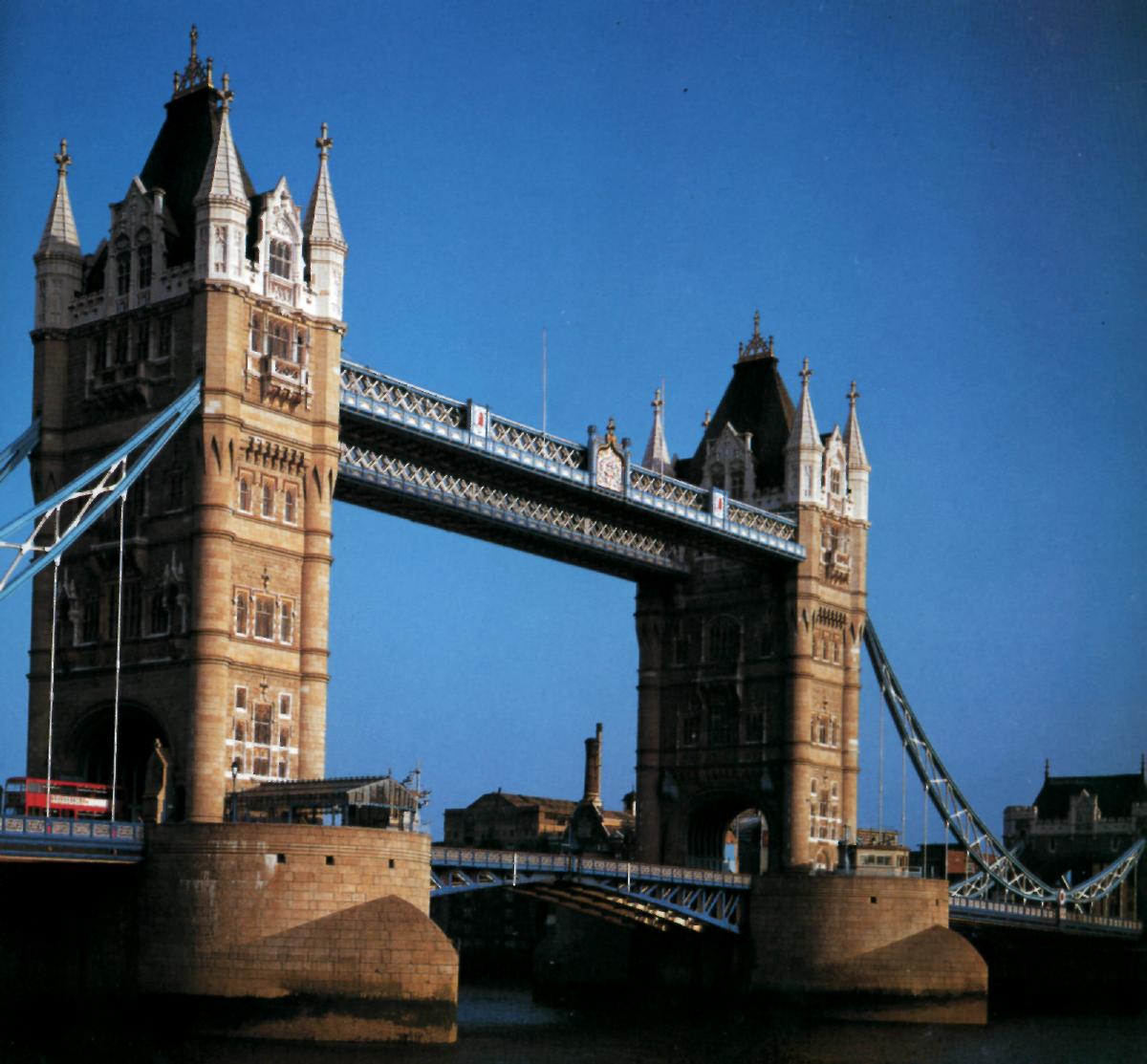

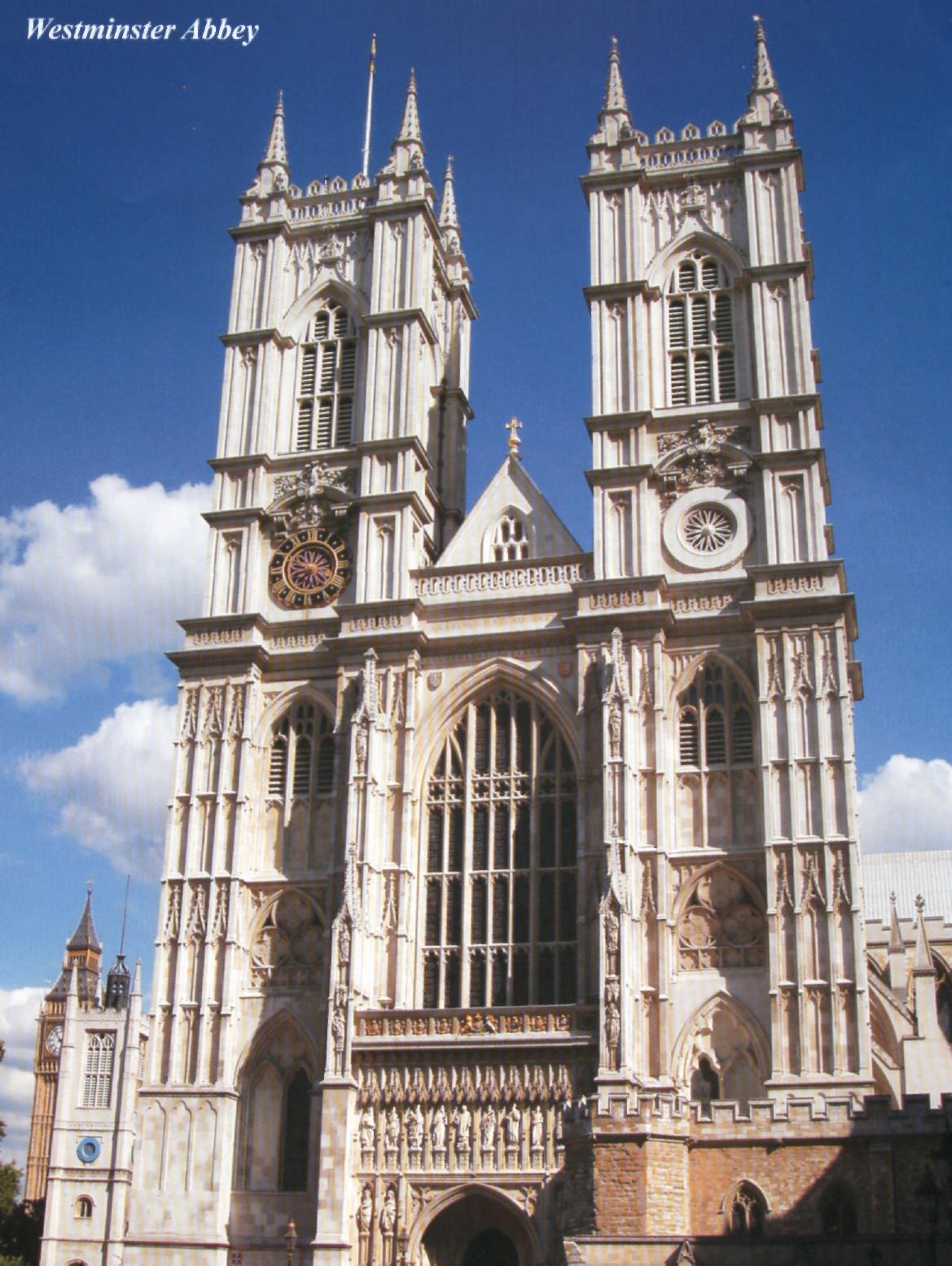
№20 №21
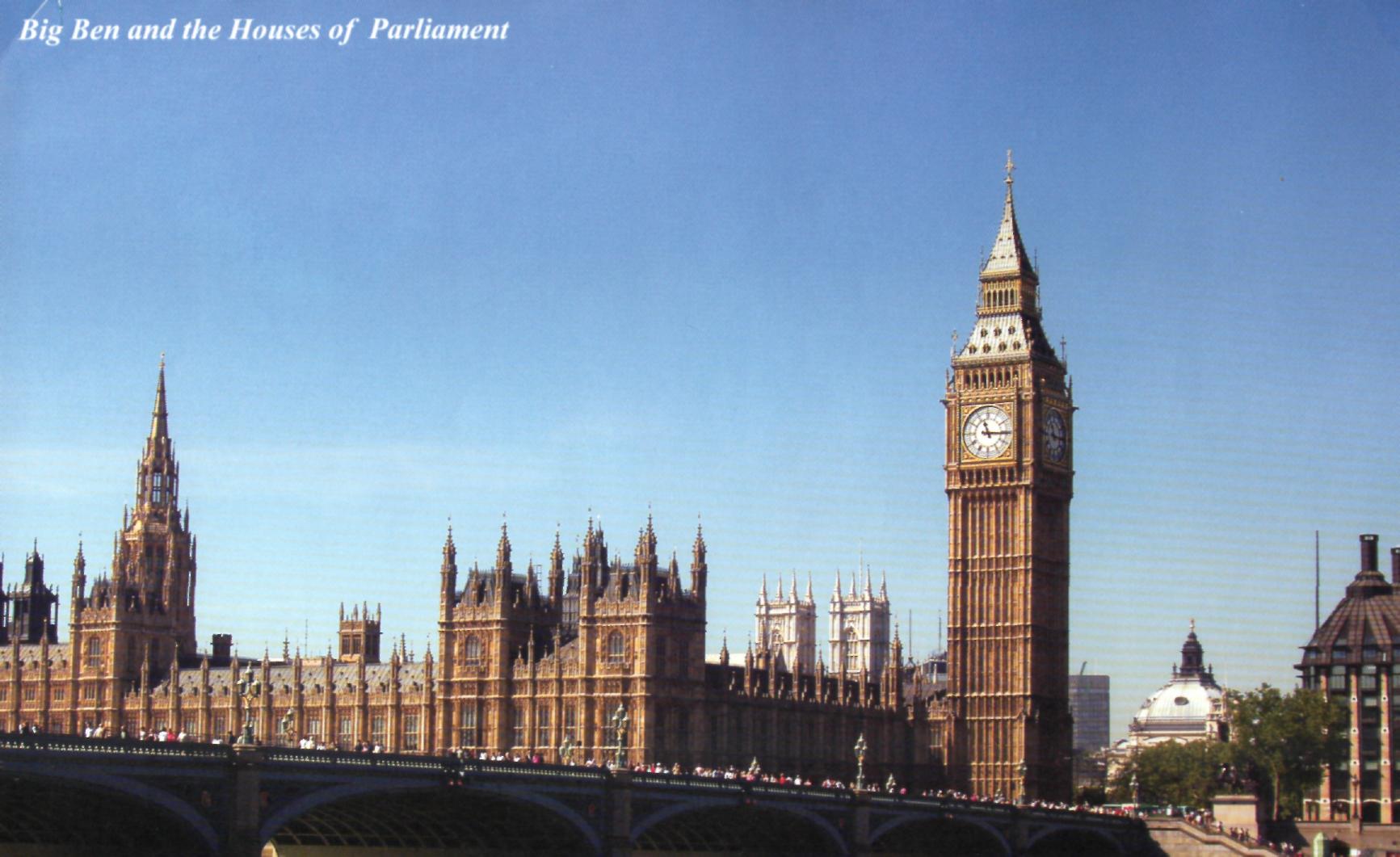

Дополнительный материал
Text.
ARCHITECTURE:
London contains buildings in all styles of English architecture since the 11th century: Norman: the White Tower, Tower of London; St Bartholomew-the-Great; the Temple Church Gothic: Westminster Abbey; Westminster Hall; Lambeth Palace; Southwark Cathedral Tudor: St James's Palace; Staple Inn 17th century: Banqueting Hall, Whitehall (Inigo Jones); the St Paul's; Kensington Palace; many city churches (Christopher Wren) 18th century: Somerset House (William Chambers); St Martin-in-the-Fields; Buckingham Palace 19th century: British Museum (neoclassical); Houses of Parliament; Law Courts (neo-Gothic); Westminster Cathedral (Byzantine style) 20th century: Lloyd's of London Since mid-century London skyline has changed. It has assumed a new profile, with familiar shapes set in a new perspective of towering blocks of flats and offices. Telecom Tower is one of the city's tallest buildings and a landmark that can be seen from all over London.
HISTORY:
London was established by the Romans shortly after their invasion of Britain in 43 AD. London is where the invading Romans first crossed the River Thames (it is situated at the lowest point where the Thames could be forded). The Romans built a city a square mile in size, surrounded it with a wall and called it "Londinium". According to the Roman historian Tacitus the city thronged with merchants and their wares within 20 years of its foundation. As Londinium, London was a Roman trading centre. This original site of London is now called the City of London and is only a very small part of London. London received its first charter in 1066 from William I. In the 11th century, London began to expand beyond the City walls when King Edward the Confessor built a huge abbey at Westminster. Even today, Westminster Abbey and the Houses of Parliament, as well as the shops, cafes, theatres and cinemas of the West End, are in the City of Westminster and not in the City of London. Westminster grew up around its abbey, and became the centre of government in the 12th century. London suffered the plague of 1665, and the Great Fire of 1666, after which many new buildings were designed by Wren. During the 18th and 19th centuries London expanded greatly: rail transport encouraged suburbs. London suffered much damage from air raids in the Second World War; new modern buildings have changed the character of many parts of the city.
EDUCATION AND CULTURE:
London is also the country's cultural capital, with world-famous institutions such as the British Museum, the National and Tate galleries, the BBC (at Broadcasting House) and the Royal Albert Hall.
London University is the largest in Britain, while the Inns of Court have been the training school for lawyers since the 13th century. Altogether there are 13 universities and 13 higher education colleges with a total of 143,000 students in London.
London has been the centre of English drama since the first theatre was built by James Burbage in 1576. Nowadays there are 204 theatres in London, a quarter of which are in Westminster's West End, and well over 1,000 drama companies. London has a large number of museums and art collections. It is a centre for the world's art trade, with many galleries and auction houses situated around Cork Street and Bond Street. London has over 300 museums.
ADMINISTRATIVE DIVISION
Administratively London consists of the City and Greater London which was formed in 1965 and has 32 boroughs (the 13 boroughs of Inner London and 19 of Outer London); they include the City of Westminster, Kensington and Chelsea, Lambeth and Islington. Greater London, extending for about 20 miles (more than 30 kilometres) in every direction from Charing Cross (the official centre of the metropolis), from Enfield in the north to Croydon in the south, and Uxbridge in the west to Romford in the east, includes the City of London, the county of London, the whole of the former county of Middlesex and parts of the Home Counties (the surrounding counties of Hertfordshire, Essex, Surrey and Kent). The population of Greater London is over eight million.
Because of the prevalence of buildings of from two to five storeys, London covers a proportionately greater area than many other large European cities. For example, Paris within the boundaries of the ring road, occupies an area of 40 square miles (105 square kilometers) while Greater London covers 610 square miles (1,580 square kilometers).
LOCAL GOVERNMENT IN LONDON
Running a city as large as London is a major task. Until 1986 the metropolis was governed by the Greater London Council (the GLC). Its main function was to deal with problems that affect the whole metropolitan area, such as traffic control, motor road construction and maintenance, big housing developments and research and planning for the entire area. The boroughs are run by locally elected councils. They are responsible for education, health and welfare services.
There are 33 local authorities in the capital, providing a range of local and other services for Londoners.
Since 1986 there has been no central authority for Greater London. The City of London.has been governed by a corporation from the 12th century. Its structure and the electoral procedures for its common councillors and aldermen are medievally complex, and it is headed by the Lord Mayor. The City of London's livery companies are the successors to London's medieval guilds of merchants and craftsmen. These livery companies promote their particular trades both nationally and internationally and do much charity work. In recent years ancient guilds, such as Mercers or the Goldsmiths, have been joined by companies covering new fields such as information technology. While keeping alive traditions and links with London's past, the livery
Task.
T: London is full of parks and gardens. Here are the mixed names of some of them. Try to guess.
-
DNGESIOGRENKNNTAS (KENSINGTON GARDEN)
-
EPYKHADR (HYDE PARK)
-
STKEERRNAGP (REGENT'S PARK)
-
DCPMIARROKHN (RICHMOND PARK)
-
NRKREAGEP (GREEN PARK)
-
TPRSMESKJAAS (ST. JAMES PARK)
1 См. информационные объекты
2 См. информационные объекты
3 См. Информационные объекты
4 См. Информационные объекты.
5 См. Информационные объекты
6 См. информационные объекты.
7 См Информационные объекты.
8 См. Информационные объекты.
9 См. Информационные объекты
10 См. Информационные объекты
11 См. Информационные объекты
12 См. Информационные объекты
13 См. Информационные объекты
14 См. Информационные объекты
15 См. Информационные объекты.
16 См. Информационные объекты.
17 См. Информационные объекты.
18 См. Информационные объекты.
19 См. Информационные объекты.
20 См. Информационные объекты
21 См. Информационные объекты.
22 См. Информационные объекты.
23 См. Информационные объекты.


